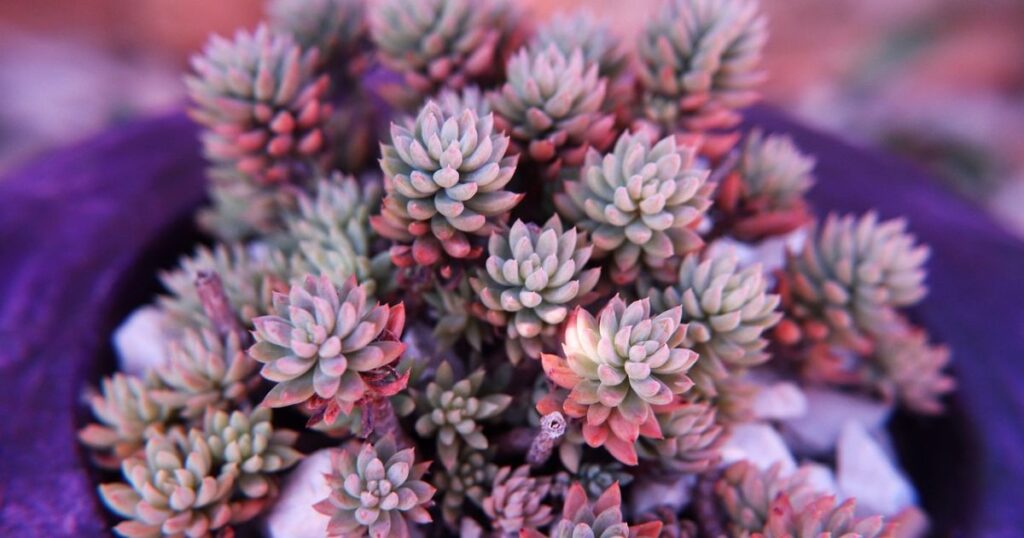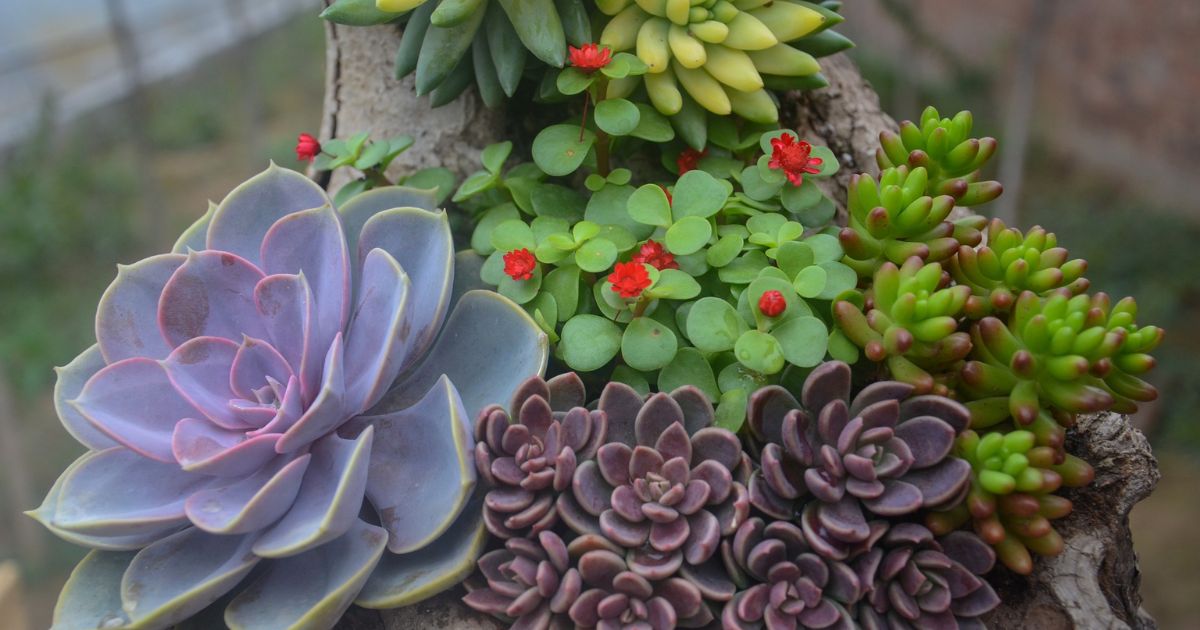Succulents are hardy plants that can typically stay outside in light rain. However, too much rain can lead to overwatering, which may harm them. It’s important to ensure they have well-draining soil and shelter during heavy downpours to keep them thriving. Monitor the weather and adjust their outdoor exposure accordingly.
Curious about caring for succulents? Wondering, Can succulents stay outside in the rain? Discover the secrets to keeping your succulents healthy even in wet weather. Join us as we explore the best practices for succulent care and ensure your green companions thrive.
Succulents can stay outside in light rain, but excessive moisture can harm them. Proper drainage and shelter during heavy rain are essential to protect these hardy plants. Monitoring weather conditions and taking appropriate precautions is key to succulent care.
Understanding Succulents
Before delving into the specifics of succulents and rain, it’s important to grasp the nature of these fascinating plants. Succulents are known for their ability to store water in their leaves, stems, and roots. This unique adaptation allows them to survive in arid environments with minimal rainfall. It also makes them well-suited for indoor cultivation, as they can thrive with minimal care.
Factors to Consider
When contemplating whether to leave your succulents outside in the rain, several factors need to be taken into account. Let’s break down the key considerations:
Type of Succulent
Not all succulents are the same, and their tolerance to rain can vary significantly. Some succulents are more adaptable to wet conditions, while others are highly sensitive. If you’re wondering, are succulents good for air it’s important to note that commonly grown succulents like Aloe, Agave, and Sempervivum can generally withstand rain better than more delicate varieties.
Rain Intensity
The intensity and duration of the rain are crucial factors to consider. Light to moderate rain may be beneficial for succulents as it can wash away dust and debris while providing much-needed moisture. However, heavy, prolonged rain can lead to overwatering and root rot in succulents.
Seasonal Changes
Succulents may exhibit varying responses to rain depending on the season. During the growing season, they can typically handle more moisture, while in the dormant season, they may require less water. Understanding the seasonal needs of your succulents is essential for their well-being.
Pot and Soil Conditions
The type of pot and soil used for your succulents plays a significant role in their response to rain. Well-draining soil and pots with drainage holes are essential to prevent waterlogged roots, which can be detrimental to succulents.
Microclimates
Local weather conditions and microclimates can vary even within the same geographical region. Take into consideration the specific conditions in your area, such as humidity levels and rainfall patterns. This will help you make informed decisions about your succulents.
Best Practices for Succulents in the Rain
To ensure your succulents remain healthy when exposed to rain, follow these best practices.
Choose the Right Location

Position your succulents in locations where they receive adequate sunlight and good air circulation. This will help rainwater evaporate more quickly and prevent water from accumulating on the leaves and in the soil.
Use Well-Draining Soil
Plant your succulents in well-draining soil mixes. Mixing potting soil with perlite or sand can enhance drainage and reduce the risk of waterlogged roots.
Opt for Pots with Drainage Holes
Select pots with drainage holes to allow excess water to escape. It’s essential to prevent water from accumulating at the bottom of the pot, which can lead to root rot.
Monitor Rainfall
Keep an eye on the weather forecast and rainfall predictions. If heavy rain is expected, consider moving your succulents to a sheltered area or bringing them indoors temporarily.
Avoid Overwatering
Even if your succulents are outside, it’s crucial not to water them too frequently. Let the rainwater contribute to their moisture needs, and water only when the soil is dry to the touch.
Prune and Clean
Regularly inspect your succulents for any dead or rotting leaves. Removing these can help prevent the spread of disease and improve overall plant health.
Adjust for Seasonal Variations
Recognize the seasonal changes in your succulents’ water requirements. Reduce watering during the dormant season and increase it when they are actively growing.
Shelter During Heavy Rain
In cases of heavy or extended rainfall, provide temporary shelter to protect your succulents. This can be as simple as moving them to a covered patio or using an umbrella.
Succulent Varieties and Rain Tolerance
Different succulent varieties exhibit varying levels of tolerance to rain. Here’s a brief overview of common succulents and their suitability for outdoor rain exposure.
| Key Points | Description |
| Succulent Types | Some succulents are more rain-tolerant than others. Choose varieties suited for outdoor exposure. |
| Rain Intensity | Light rain may benefit succulents, while heavy rain can lead to overwatering and root rot. |
| Seasonal Considerations | Adjust watering based on the growing season; reduce during dormancy, increase during active growth. |
| Pot and Soil Conditions | Well-draining soil and pots with drainage holes are essential to prevent waterlogged roots. |
| Microclimates | Local weather conditions and microclimates can affect succulents’ response to rain. |
| Best Practices | Tips for successful outdoor succulent care, including location, shelter, and pruning. |
| Succulent Varieties | A breakdown of common succulents and their tolerance to rain, from Aloe to Crassula. |
| Key Points | Description |
| Succulent Types | Some succulents are more rain-tolerant than others. Choose varieties suited for outdoor exposure. |
| Rain Intensity | Light rain may benefit succulents, while heavy rain can lead to overwatering and root rot. |
| Seasonal Considerations | Adjust watering based on the growing season; reduce during dormancy, increase during active growth. |
| Pot and Soil Conditions | Well-draining soil and pots with drainage holes are essential to prevent waterlogged roots. |
| Microclimates | Local weather conditions and microclimates can affect succulents’ response to rain. |
| Best Practices | Tips for successful outdoor succulent care, including location, shelter, and pruning. |
| Succulent Varieties | A breakdown of common succulents and their tolerance to rain, from Aloe to Crassula. |
Aloe
Aloe plants are generally rain-tolerant and can handle light to moderate rainfall. They are often found in arid regions and have adapted to infrequent water.
Agave
Agave succulents are excellent choices for outdoor gardens. They can withstand heavy rainfall and are often used in xeriscaping.
Sempervivum (Hens and Chicks)
Sempervivum are cold-hardy succulents that can tolerate rain, particularly in the growing season. They have a rosette shape that allows water to run off easily.
Echeveria
Echeveria succulents are less rain-tolerant and may require shelter during heavy downpours. They are well-suited for drier conditions.
Sedum
Sedum succulents are generally hardy and can handle rain, especially when planted in well-draining soil.
Crassula
Crassula succulents vary in their response to rain. Some species can handle wetter conditions, while others prefer drier environments.
FAQ ‘s
How long can succulents sit in wet soil?
Succulents should not sit in wet soil for an extended period; it can lead to root rot within a few days if the soil remains soggy.
What happens if succulent leaves get wet?
If succulent leaves get wet, it’s generally fine, but prolonged moisture or wetness can lead to issues like rot and fungal diseases.
Do succulents like to be wet?
No, succulents do not prefer to be constantly wet. They thrive in well-draining soil and should only be watered when the soil is dry to avoid overwatering.
When can succulents go outside?
Succulents can go outside when the threat of frost has passed and the weather is consistently warm, typically in spring or early summer.
Conclusion
The question of whether succulents can stay outside in rain is not a simple yes or no. The ability of succulents to thrive in outdoor rain conditions depends on several factors, including the type of succulent, rain intensity, seasonal changes, pot and soil conditions, and local microclimates. By following the best practices outlined in this article, you can help your succulents not only survive but thrive when exposed to rain.
Remember that succulents are adaptable and resilient plants, but they also require careful attention to their specific needs. With the right care and precautions, you can enjoy the beauty of succulents in your outdoor garden without the fear of rain ruining their appeal. So go ahead and let your succulents enjoy the occasional rain shower – just be sure to monitor the conditions and provide them with the care they deserve.










